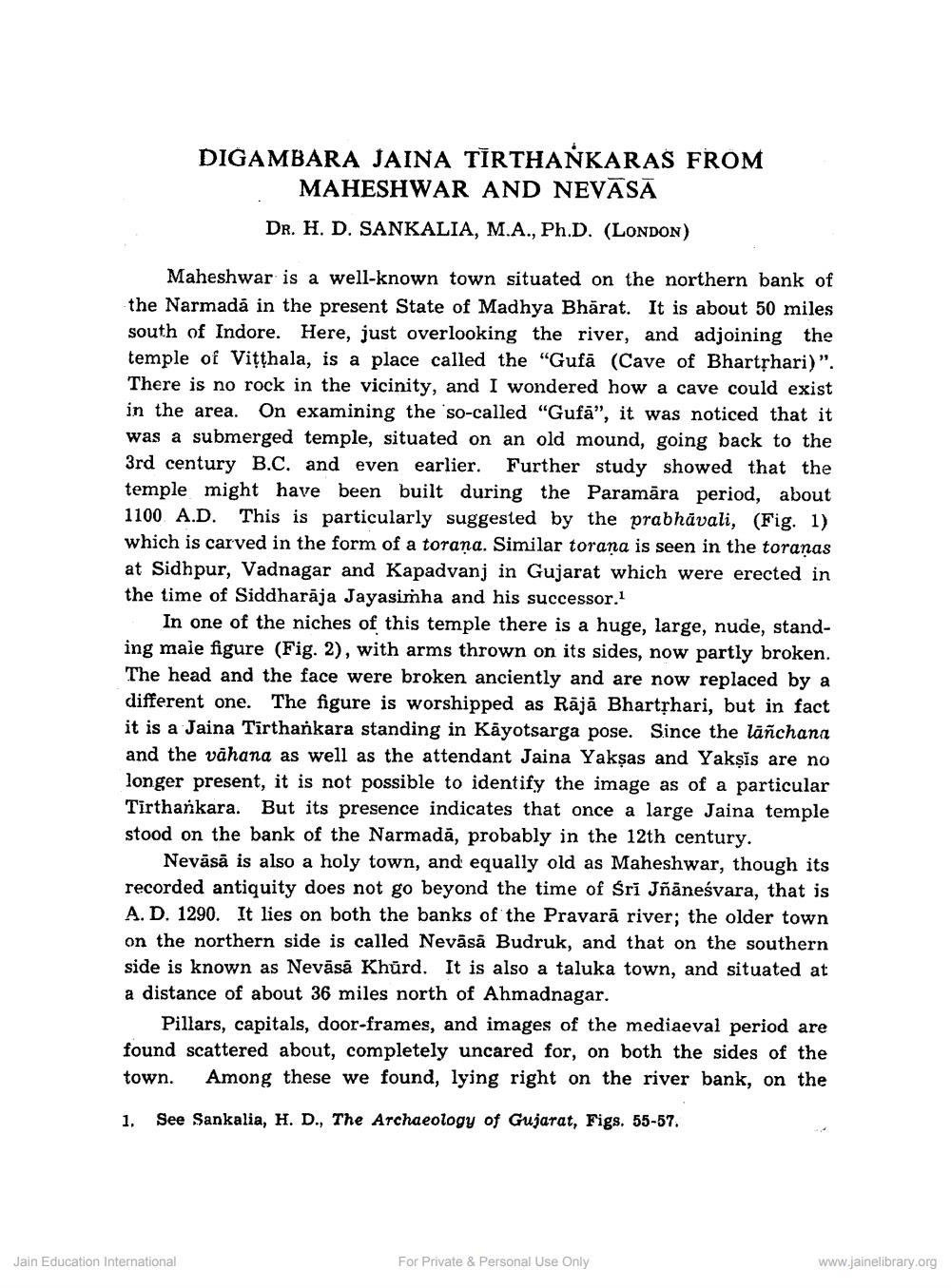Book Title: Digambara Jaina Tirthankaras from Maheshwarand Nevasa Author(s): H D Sankalia Publisher: Z_Vijay_Vallabh_suri_Smarak_Granth_012060.pdf View full book textPage 1
________________ DIGAMBARA JAINA TĪRTHANKARAS FROM MAHESHWAR AND NEVĀSĀ Dr. H. D. SANKALIA, M.A., Ph.D. (LONDON) Maheshwar is a well-known town situated on the northern bank of the Narmada in the present State of Madhya Bharat. It is about 50 miles south of Indore. Here, just overlooking the river, and adjoining the temple of Vitthala, is a place called the "Gufā (Cave of Bhartshari)”. There is no rock in the vicinity, and I wondered how a cave could exist in the area. On examining the so-called "Gufā”, it was noticed that it was a submerged temple, situated on an old mound, going back to the 3rd century B.C. and even earlier. Further study showed that the temple might have been built during the Paramāra period, about 1100 A.D. This is particularly suggested by the prabhávali, (Fig. 1) which is carved in the form of a torana. Similar torana is seen in the toranas at Sidhpur, Vadnagar and Kapadvanj in Gujarat which were erected in the time of Siddharāja Jayasimha and his successor.1 In one of the niches of this temple there is a huge, large, nude, standing male figure (Fig. 2), with arms thrown on its sides, now partly broken. The head and the face were broken anciently and are now replaced by a different one. The figure is worshipped as Rājā Bhartịhari, but in fact it is a Jaina Tīrthankara standing in Kāyotsarga pose. Since the lāñchana and the vähana as well as the attendant Jaina Yaksas and Yaksis are no longer present, it is not possible to identify the image as of a particular Tirthankara. But its presence indicates that once a large Jaina temple stood on the bank of the Narmadā, probably in the 12th century. Nevāsā is also a holy town, and equally old as Maheshwar, though its recorded antiquity does not go beyond the time of Sri Jñāneśvara, that is A.D. 1290. It lies on both the banks of the Pravarā river; the older town on the northern side is called Nevāsā Budruk, and that on the southern side is known as Nevāsā Khũrd. It is also a taluka town, and situated at a distance of about 36 miles north of Ahmadnagar. Pillars, capitals, door-frames, and images of the mediaeval period are found scattered about, completely uncared for, on both the sides of the town. Among these we found, lying right on the river bank, on the 1. See Sankalia, H. D., The Archaeology of Gujarat, Figs. 55-57. Jain Education International For Private & Personal Use Only www.jainelibrary.orgPage Navigation
1 2
